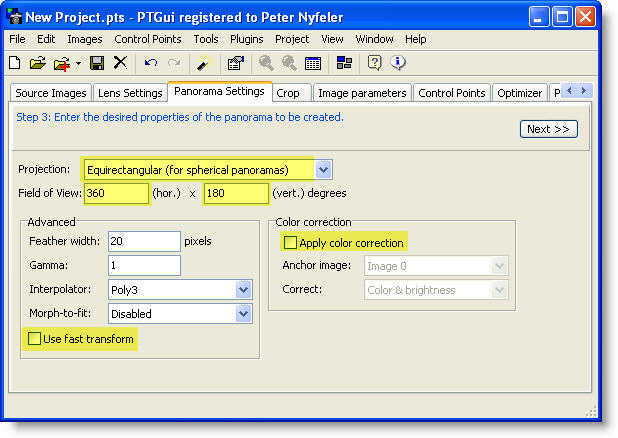

With PTGui, you can paint the objects you want to mask out in red or green, but notice that red is for hiding objects from your final panorama, while green is for preserving objects so they come out visible in your output. This technique is used to fix blending errors. Masking is frequently resorted to when there are moving objects in your panoramic images that result in doubles, or when you don’t want to see your tripod showing on the nadir image. That way, by having your 360 camera swiveling on a fixed point, you have ensured that the perspective remains the same, and saved yourself the headache of having stitching errors. This technique is also explained by its inventor, Philippe Hurbain on his personal website. If you don’t have a panohead, you can also craft a philopod, which is a piece of string tying the no-parallax point of your camera at one end with a weight at the other end. To solve that problem, you need to attach a panoramic head, panoheadfor short, onto your tripod, to help rotate your camera around the front of the lens. Now suppose if you mount your camera on a tripod and start turning it on its base, the lens/perspective is constantly changing as you take images for your panorama. The viewpoint for your camera lens is its entrance pupil, also known as no-parallax point or nodal point. To avoid having stitching errors, we recommend that you avoid having parallax at all costs that is also to say, ALL of your images to be stitched into a panorama must be shot from ONE single viewpoint. Sometimes we have to let go to move forward.Parallax is a phenomenon where two objects in your source images appear to have changed their relative positions from one to another, because of changes in the camera’s perspective.
Ptgui stitch nadir how to#
The good news is that any of us that have used PT Gui Pro and Pano2VR actually appreciates what the MP platform does and how to solve challenges like not having a railing look weird that is close to the camera (by how we position the camera for the stitching).Īll that said, I wish we could use PT Gui Pro and Pano2VR to "clean up" the MP images and add our own content in the zenith and nadir. I stopped cold turkey as soon as I received the Camera. And I'm once again thrilled to be liberated from having to spend hours using it - love Matterport
Ptgui stitch nadir plus#
Plus 1 plus 1 plus 1 Posted by wanted to chime in here that Pano2VR holds such a special place in my heart for years of use after painstakingly working with HDR fisheye images, merging with PTGui, then making a marvelous tour with Pano2VR. It makes it less confusing to know which was what later on by just the filenames

You can control the portion of the sphere used in a rectangle window cropped/created from the equirectangular image.Īn added note: I label the filename with those 3-letter abbreviations at the end of the filename before the. These odd perspective are done at rare times for fun, as people might use them on social media with a link to the fully-spherical version. mirror ball view and tunnel view or little tiny planet and such.

a default view is sometimes used for creating Apple widgets when placing fully-spherical panos into Apple's iBook Author primarily for the iPad (1024 x 768 px). images are cut like a rectangle clipped from any area of the sphere. Then I sometimes create additional images in Pano2VR as well. Next, I take the resulting equirectangular image back into Photoshop to to crop a horizontal slice (often removing the more severely stretched top and bottom areas) for a digi-flat alternative view.
Ptgui stitch nadir Patch#
Then I use Pano2VR with Photoshop to patch my logo at the bottom of the equirectangular panorama. Disclaimer: I am still somewhat of a novice at panos myself, but do you have Pano2VR?Īfter stitching a dozen bracketed photos in PTGui to create an equirectangular image, I next sharpen it and such in Photoshop.


 0 kommentar(er)
0 kommentar(er)
